So, the thing about Agatha is she’s an ancient red dragon who is holding the adventurer’s home village hostage, demanding they- Hmmm? Uh, ok, my bad – that’s Argethra the Vicious. Must have gotten my DnD campaign notes mixed in here by accident.
Agatha’s Soul Cauldron is a hilarious black and white movie about two kindly old women who occasionally poison people, and Cary Grant is- what’s that? Wrong again? Oh, right, that’s “Arsenic and Old Lace.”
From the top! Agatha’s Soul Cauldron is a widely played and deceptively complex card, with a lot of lessons to teach about the Magic rules. This article is going to go over three corners of the rules that don’t come up every day: timestamps, card names referencing themselves, and linked abilities.
Timestamps
The first place the Cauldron might cause us double toil and trouble is when it’s entering play, and thus getting a timestamp, as dictated by: 613.7d: An object receives a timestamp at the time it enters a zone.
This is relevant for one of the more common questions I’ve seen, which goes: “My opponent has a Dress Down, and I exiled my Yawgmoth with Agatha’s Soul Cauldron, putting a counter on my Wall of Roots. What abilities does my creature have?”
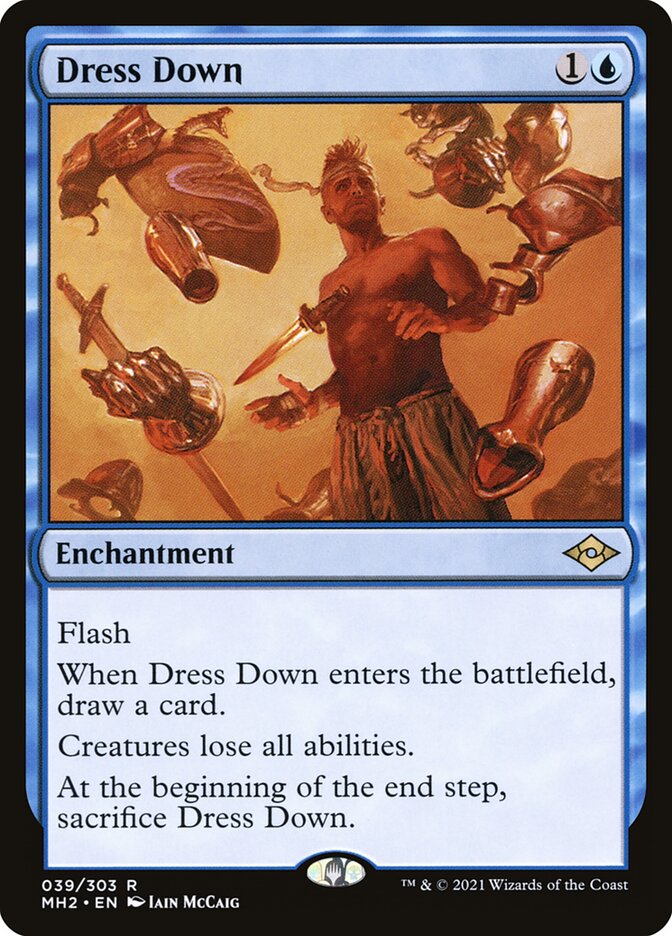

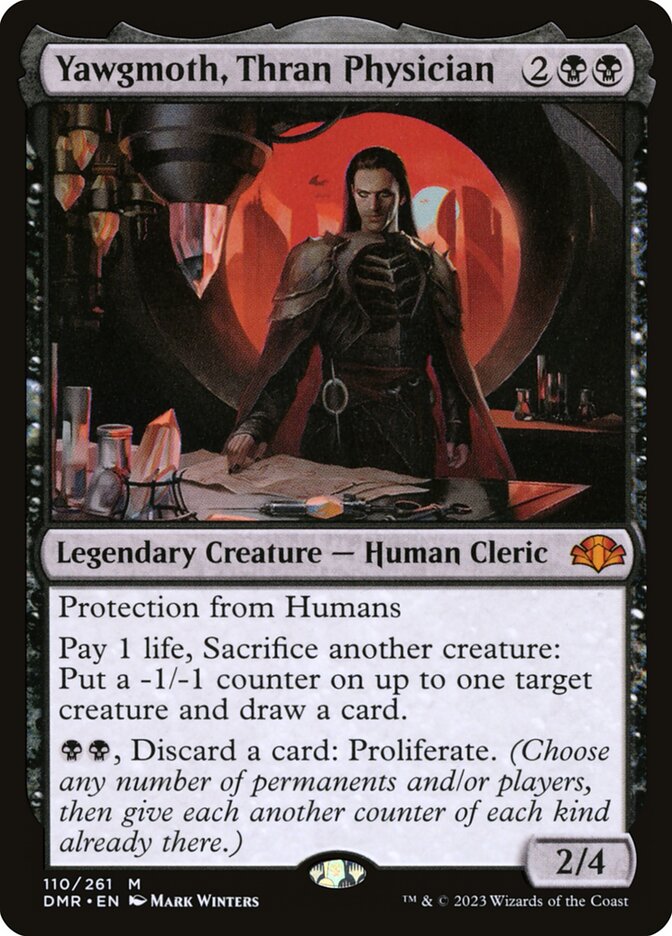
Let’s rewind some: “Timestamps” are how the game keeps track of what order to apply various effects. Most of the time, it doesn’t actually matter what order things entered the battlefield, but sometimes knowing what order to apply the various effects is crucial.
So how do we tell the difference? How do we know if two objects care about timestamp order?
For that, we need to know if the effects apply in the same layer : 613.7 Within a layer or sublayer, determining which order effects are applied in is usually done using a timestamp system. An effect with an earlier timestamp is applied before an effect with a later timestamp.
So, timestamps are only relevant if effects are both applying in the same layer. My Baneslayer Angel doesn’t need to know whether your Murktide Regent entered before or after it did, and same for my Castle Ardenvale and your Sheoldred, The Apocalypse. These things have nothing to do with each other. They still have separate timestamps based on when they entered, but none of those cards change how they work based on those timestamps.
Timestamps become relevant when we have multiple effects applying to the same object, and the order of those effects changes the end result. One of the most common questions here is something like: “I have this Blood Crypt, and I played a Blood Moon, and now my opponent is casting a Spreading Seas. What is my Blood Crypt?”

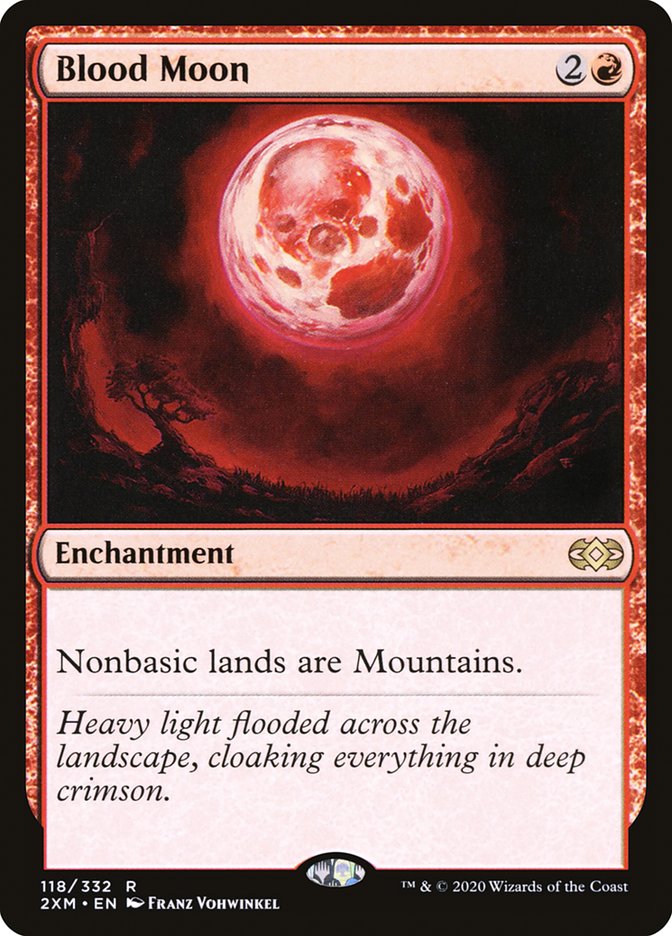

Blood Moon and Spreading Seas both apply in the Type layer, so we look at the timestamps, and apply the oldest one first, then the newer ones – the most recent effect wins.
That’s a lot of background.
Back to the original question: we have a specific rule that mentions counters and timestamps, but is very sneakily not relevant here: 613.7c Each counter receives a timestamp as it’s put on an object or player. If that object or player already has a counter of that kind on it, each counter of that kind receives a new timestamp identical to that of the new counter.
Why is this sneaky? Well, the timestamp of the counter doesn’t actually matter. It could matter if we were giving out a Flying counter or something, but the real question here is about the timestamps of the Dress Down and the Cauldron. This is because the +1/+1 counter does not grant any abilities to the creature, the Cauldron does. The +1/+1 counter merely changes whether the Cauldron applies to the Wall of Roots or not.
So at the end of it all, we have two effects, the Dress Down and the Cauldron, which are both applying in the same layer (Abilities, aka layer 6). Just like with the Blood Moon/Spreading Seas example, the more recent effect in the same layer will win. If the Dress Down enters and takes away all the abilities, then the Cauldron enters and activates, then the Wall of Roots will look like option A. If the Cauldron is in play before the Dress Down, the Wall of Roots will look like option B – regardless of when the Cauldron is activated.
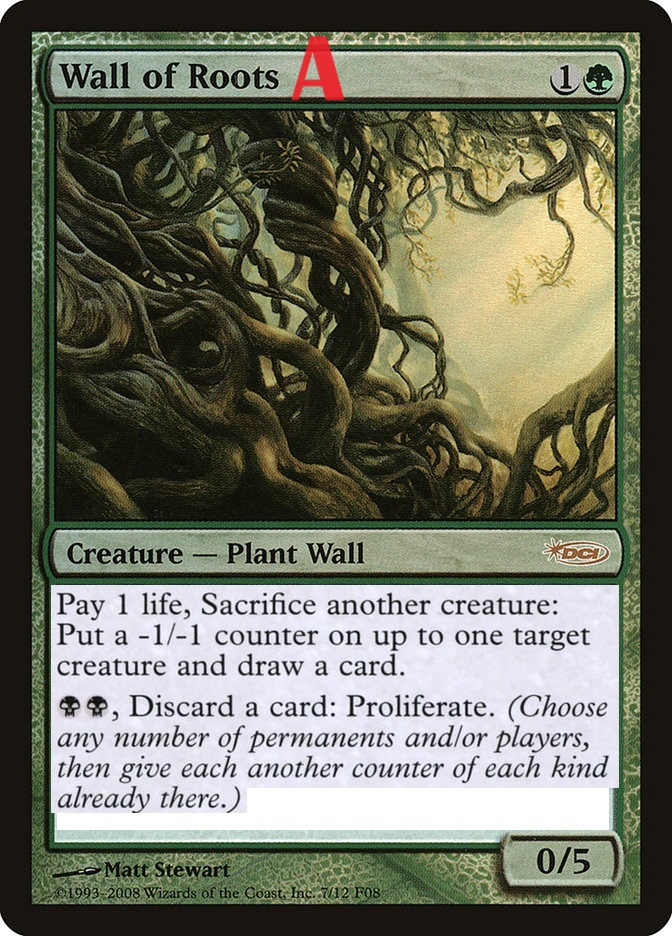
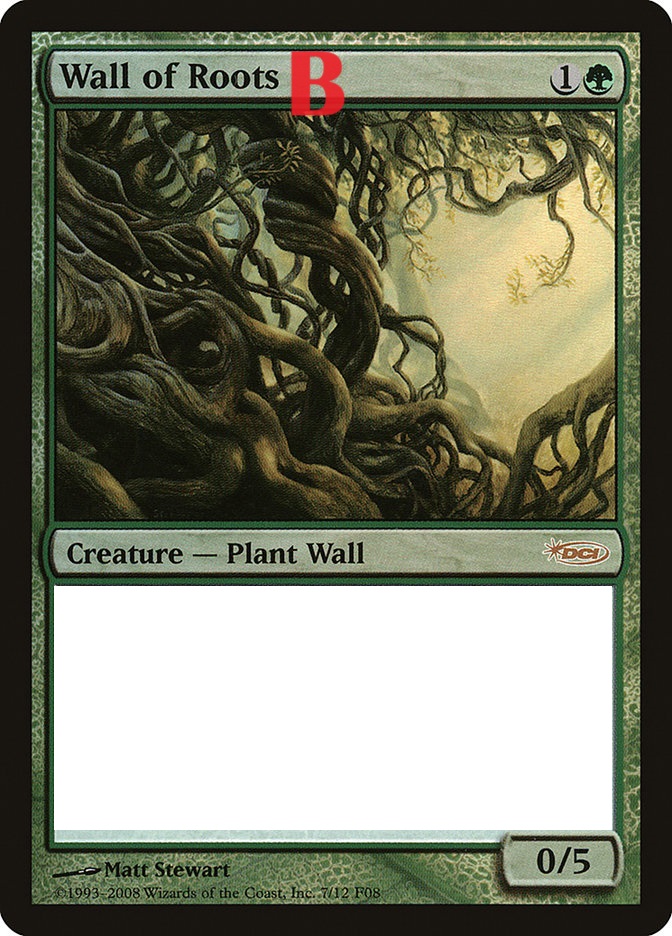
The Takeaways:
- Everything gets a timestamp when it enters play
- Timestamps only matter if multiple effects apply in the same layer
- When timestamps are relevant, the most recent effect wins
Card Names Referencing Themselves
Another dark and dusty corner of the rules the Cauldron can drag us into has to do with card names, and when the normal English language meaning of words is not the same as the Magic meaning. This is not super complicated, and in my opinion it’s fairly intuitive, but it’s not a rule that comes up too often. Rule 201.5 states: Text that refers to the object it’s on by name means just that particular object and not any other objects with that name, regardless of any name changes caused by game effects.
This means that when a card says its own name, it actually means “this piece of cardboard,” not “something with this name.” This can become important with the Cauldron when a player eats a creature, putting a counter on something in play, and the creature that was exiled had an ability that named itself.
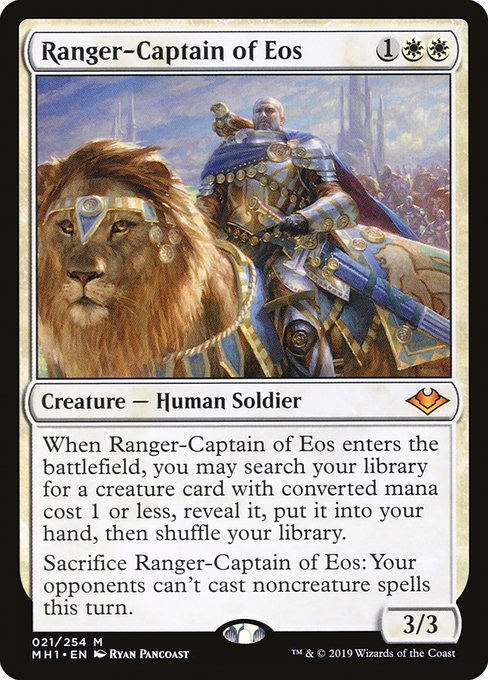

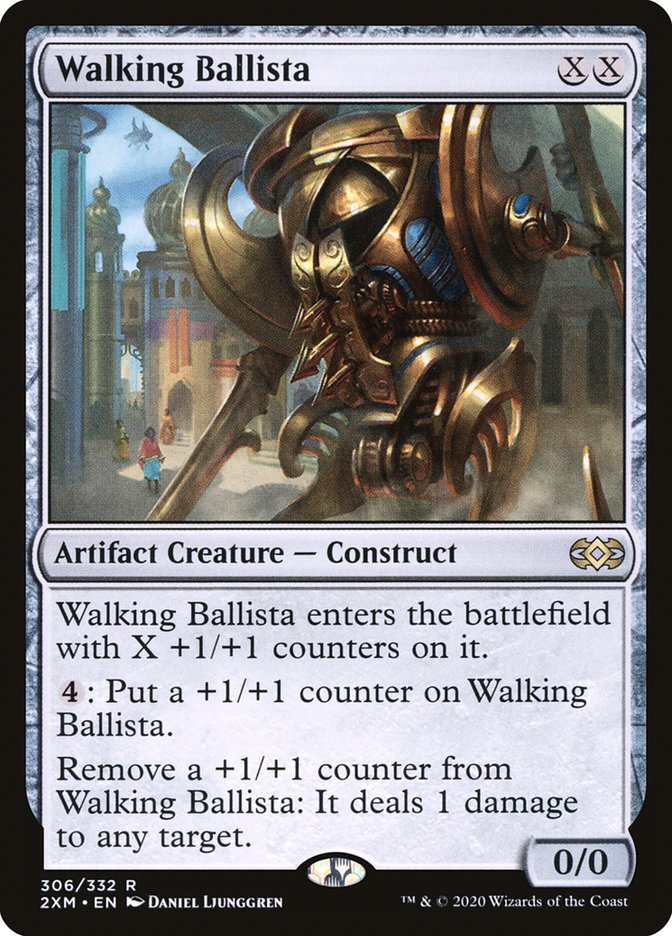
Even though each of these creatures has an activated ability that refers to itself by name, if the Cauldron exiles one of them and puts the counter on a Grizzly Bears, the Bears will be able to activate the ability. The normal English meaning of the words and the Magic meaning are not quite identical anymore. After using the Cauldron to exile one of these and putting the counter on our Bears, the Grizzly Bois will look something like this:

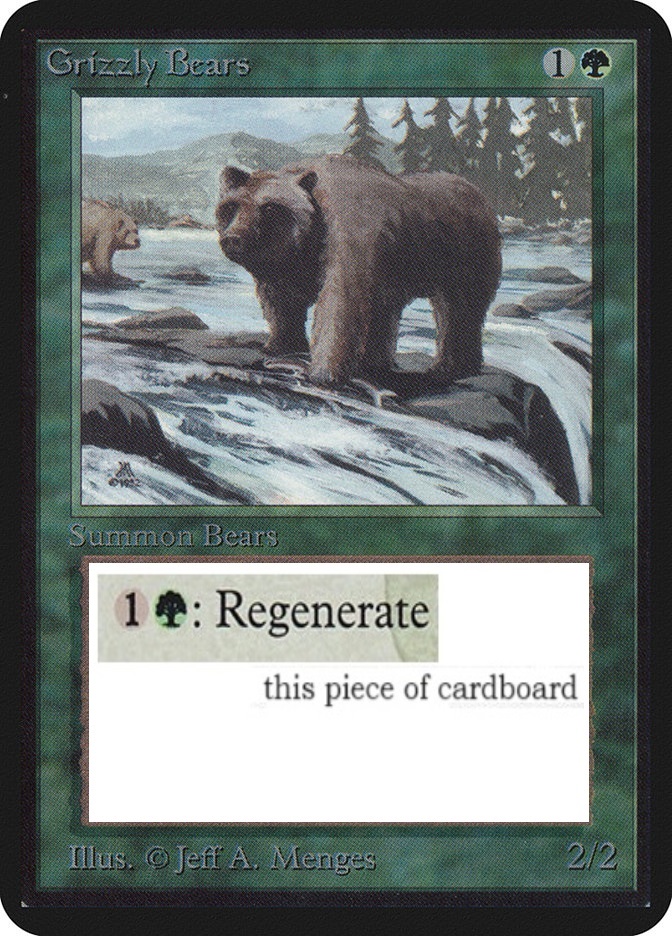
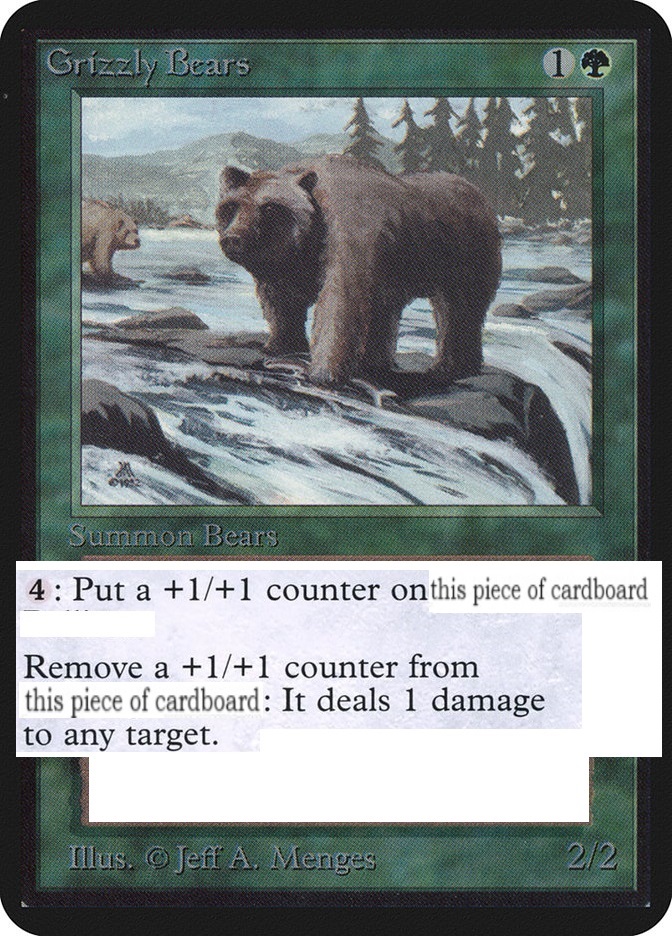
This rule also stops any attempted shenanigans with changing names. Thrun’s ability means “regenerate this thing,” not “regenerate target thing named Thrun.” Let’s imagine a player somehow manages to make their Thrun, the Last Troll and their opponent’s Phantasmal Dragon trade names.
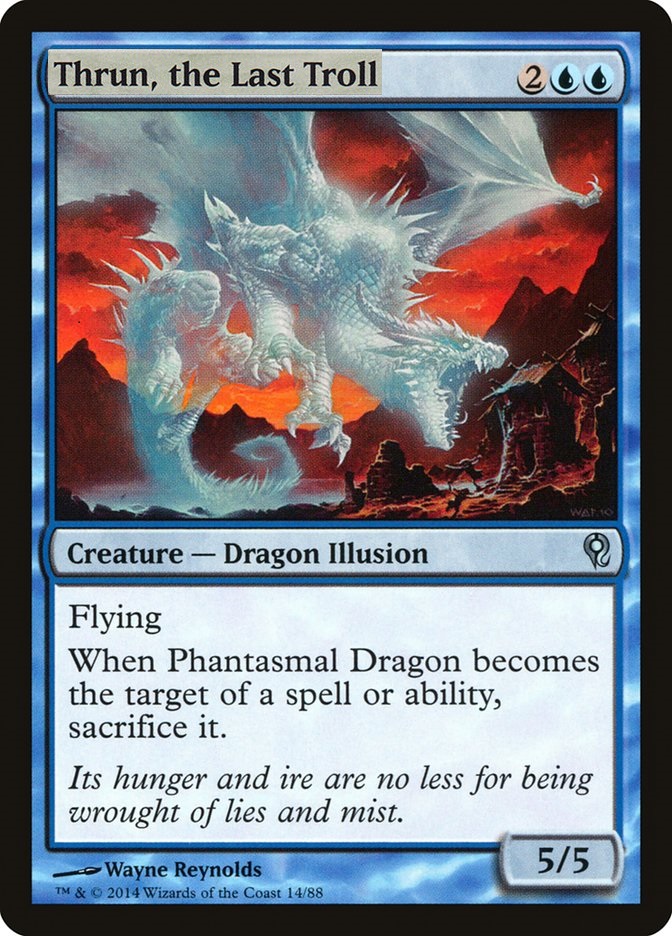
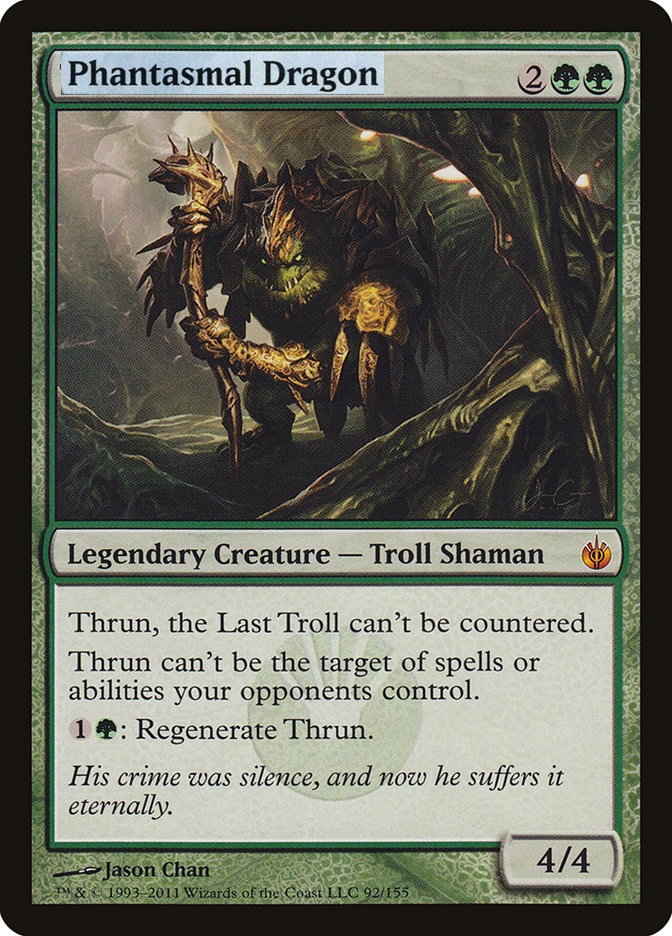
The Thrun wait – the Phantasmal Dragon umm …
When the Phantasmal Dragon that used to be a Thrun activates the Thrun’s ability targeting the Thrun that used to be a Phantasmal Dragon
The 4/4 green creature’s ability only ever affects itself, and it doesn’t care about the names.
Linked Abilities
The third corner of the rules to talk about today is linked abilities. “Linked Abilities” is what the cool kids call it when a card has two bits of text that are meant to function together.
From the CR: 607.1 An object may have two abilities printed on it such that one of them causes actions to be taken or objects or players to be affected and the other one directly refers to those actions, objects, or players. If so, these two abilities are linked: the second refers only to actions that were taken or objects or players that were affected by the first, and not by any other ability.
Flavor-wise, we know what’s going on with the Cauldron. The big picture is the Cauldron reuses stuff from the graveyard to grow the living, and recycle the dead homie’s abilities.
However, Magic being as wide and complex as it is, there’s always room for some kind of nonsense. Linked Abilities is meant to cut down on the shenanigans that would otherwise be possible.
What kind of nonsense could we get up to without this rule?
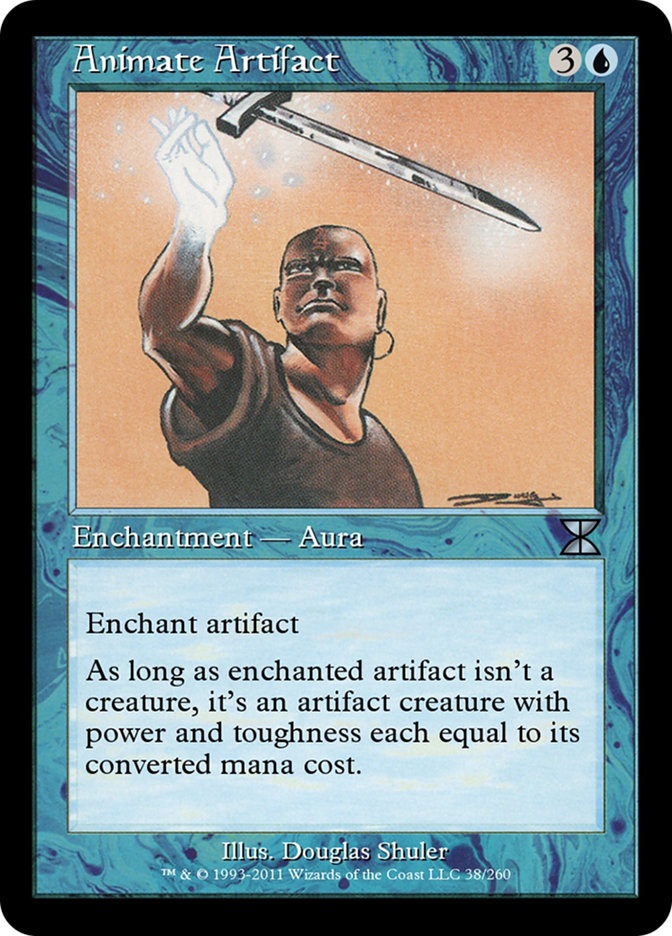
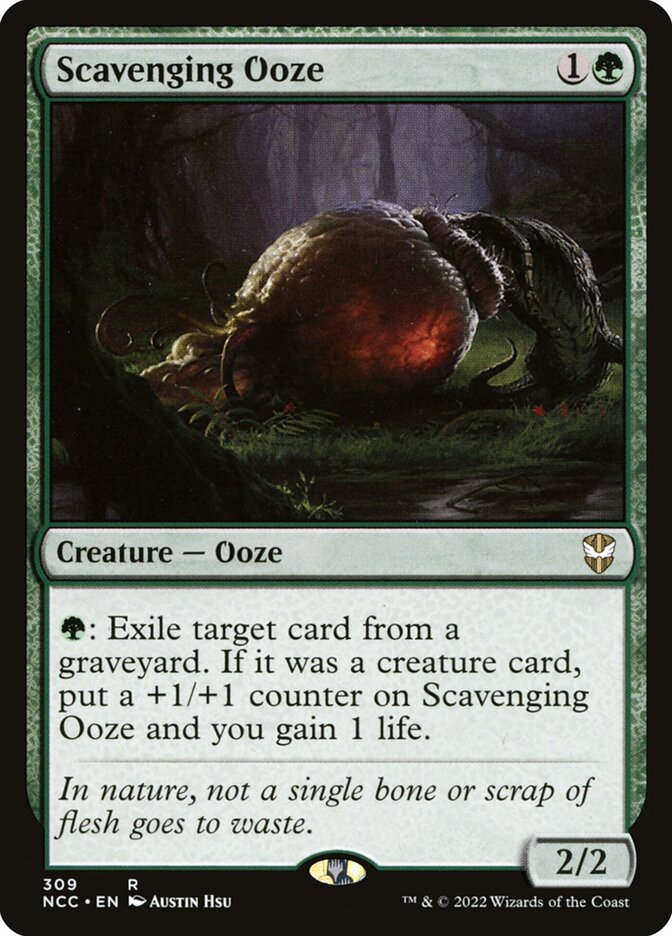
To start, suppose animated our Cauldron into a creature, it used itself to get Scavenging Ooze’s ability, and then we paid a bunch of G to exile a whole pile of creatures. Without the linked abilities rule, this would work because all the extra creatures had been “exiled with Agatha’s Soul Cauldron,” even though that was obviously not the intent of the card. Thanks to 607.1, even if we find a way to exile extra cards with the Cauldron, only creatures exiled by the default ability will grant extra abilities to creatures with +1/+1 counters.
A similar case generated some discussion recently after players noticed a bug in Magic online, when it seemed that Bomat Courier was getting a bit of an upgrade when the opponent had a Leyline of the Void.
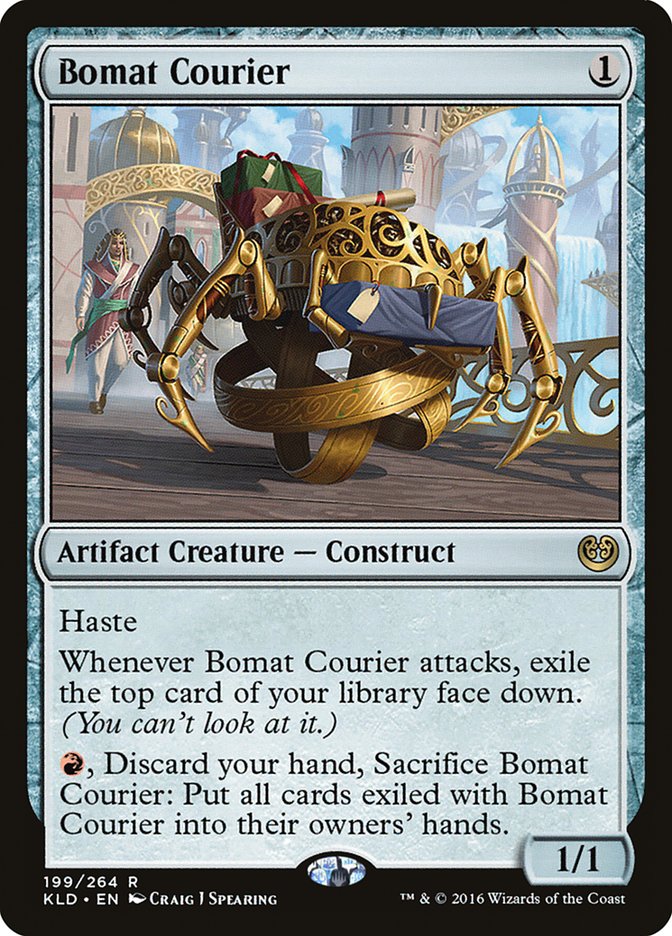

Bomat Courier’s second and third abilities are linked – first you exile some cards, and then you get those cards. The second ability “causes actions to be taken or objects or players to be affected,” and the last ability “directly refers to those actions, objects, or players.”
If we exile extra cards with the Bomat Courier somehow, we don’t get those extra cards when activating the third ability. The Leyline of the Void shouldn’t factor into how the Courier works, here. If AP has a Leyline out and NAP discards their hand to activate the Courier, they only get back the cards the Courier set aside by attacking, not the ones they just discarded.
As a proud, card-carrying member of The Azorius Senate, I appreciate any attempt from WotC to cut down on shenanigans and let me play my 48 minutes of Magic per round as Garfield intended, so I’m a big fan of the linked abilities rules.
Now if they would just do something about these double-sided card rules…
Thanks to everyone at The Azorius Senate for help proofreading.


Whenever I read card text, I substitute “~this~” into the text when I read the card name. It helps with understanding the card, and in fact some old timers may remember seeing oracle texts with this wording.
Example:
“Creatures you control with +1/+1 counters on them have all activated abilities of all creature cards exiled with ~this~.”
If you have 2 copies of Agatha’s Stew Pot, each exiling a different creature… and then one of those pots shatters… your creatures only care about the remaining pot. There’s no use crying over spilled soup; they can’t eat it.